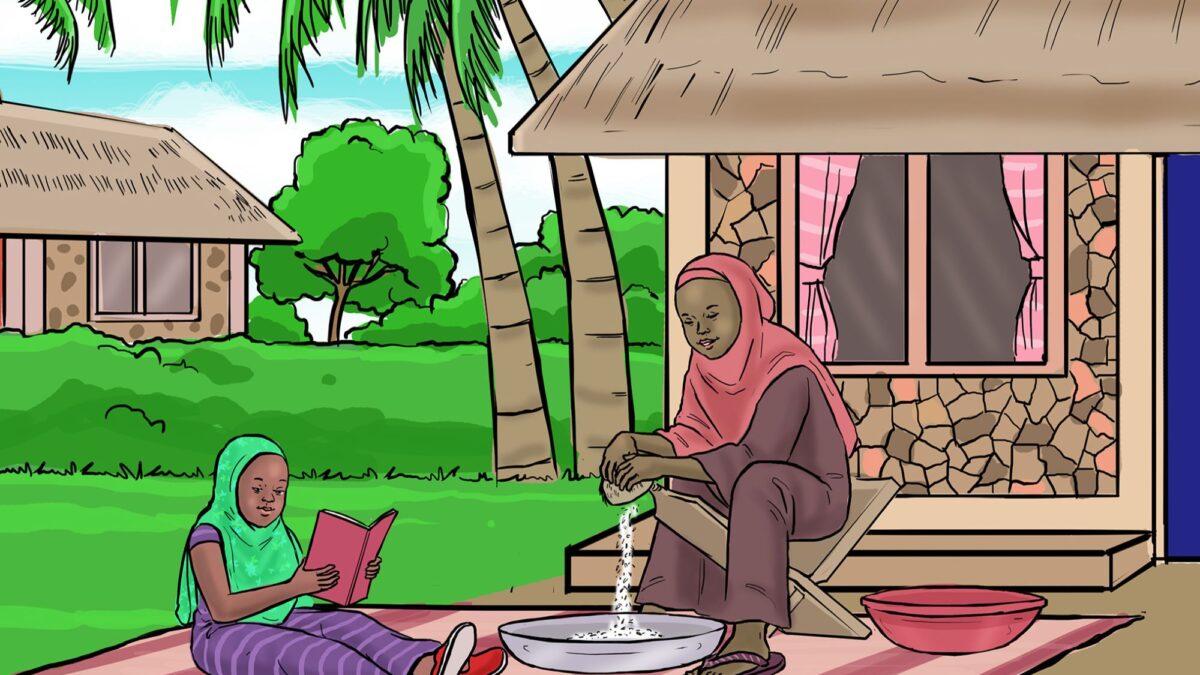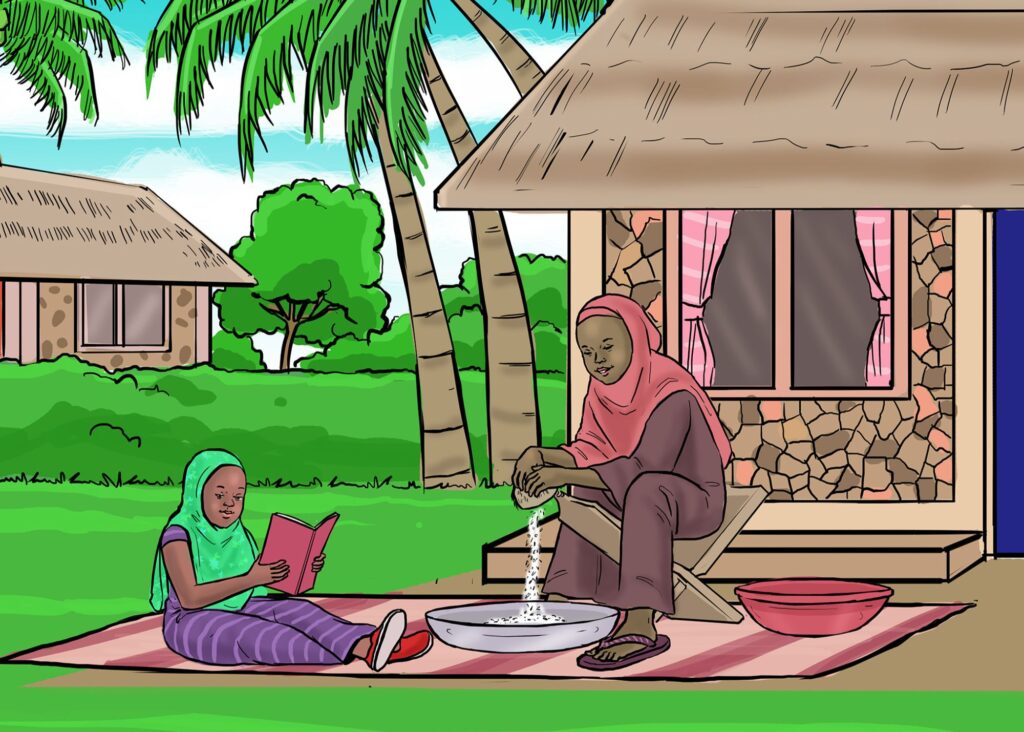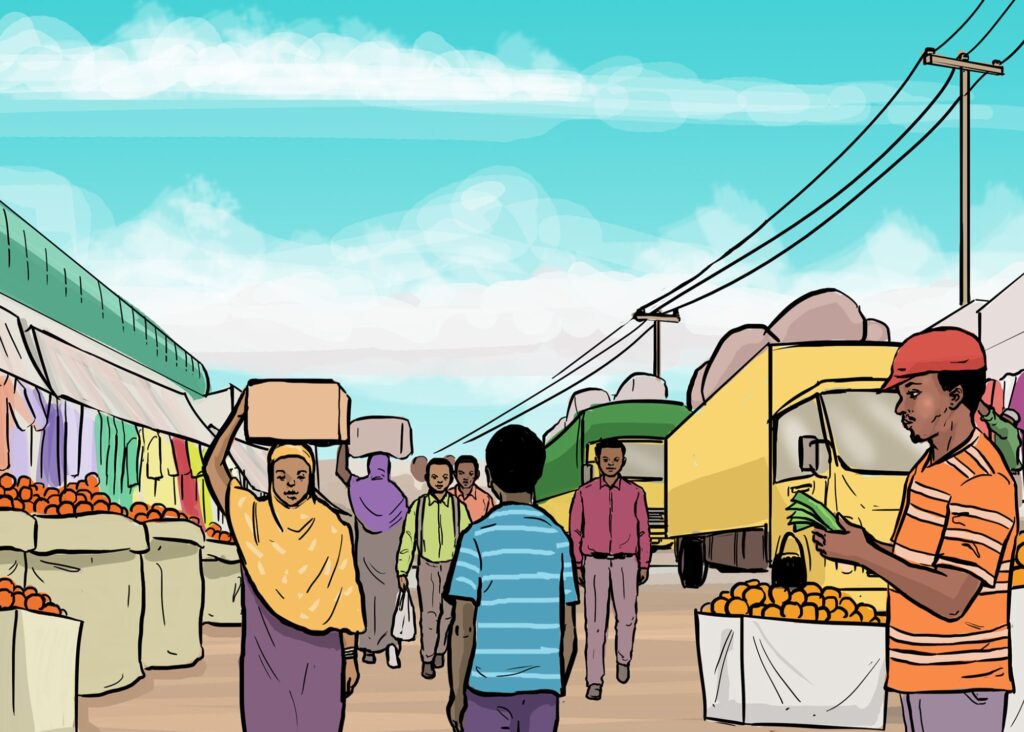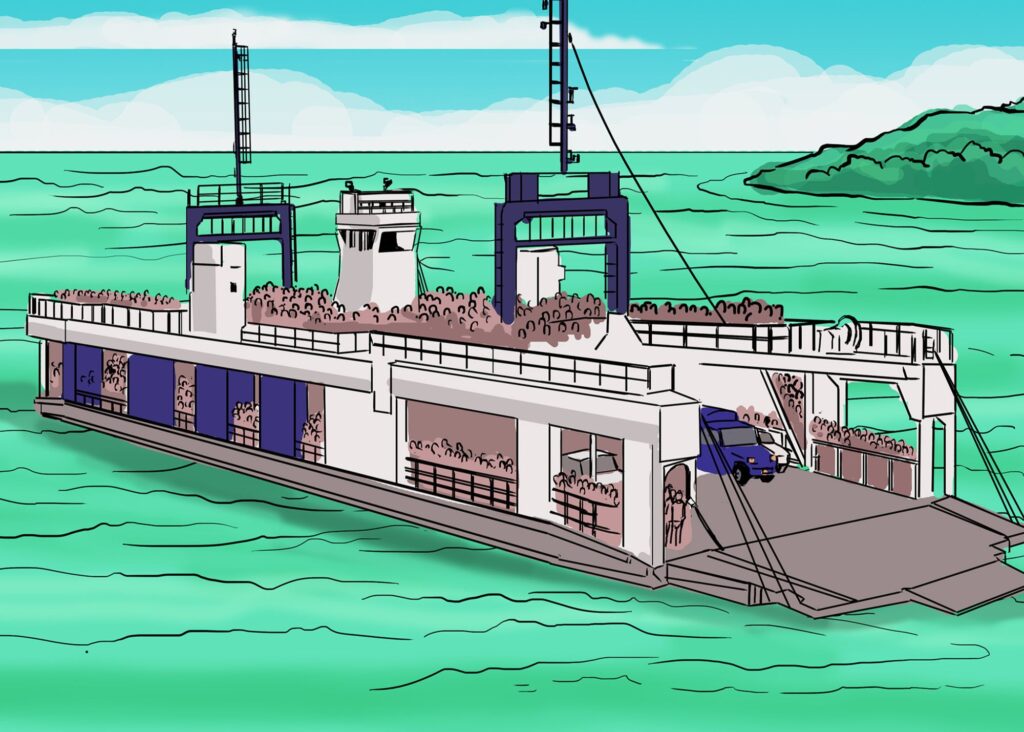The Beauty of Mombasa

It is a bright sunny day and Rehema is reading her social studies book as her mother grates coconut flesh from the shell using a tool called mbuzi.

“Mum, it says here that Mombasa was founded by a woman, did you know that?” Rehema asks her mother.
“Oh really? Tell me more”, her mother says, focusing on the coconut she is grating.
“Her name was Mwana Mkisi, and she was mother of the 12 Swahili tribes in Mombasa,” Rehema responds.
“It also says that together with her descendant Sheikh Mvita Mkisi, they shaped the culture and identity of Mombasa,” Rehema continues.
“Yes, I remember this, she founded Kongowea where our market is,” her mother adds, putting aside the now empty coconut shell.

“Rehema don’t mess with those dried coconut tree branches, we need them to thatch the houses,” mother warns.
“Muuummmm they are called makuti, they are what gives our coast it’s aesthetic look,” she says with flamboyance.
Rehema stands up to show her mother a picture in her book depicting four large tusks making an archway on the road in Mombasa town.
“Mum, are these tusks from an elephant?” Rehema asks.
Her mother laughs before responding.
“No Rehema, elephant tusks are not that big. Those are artificial tusks built to add to Mombasa’s beauty,” her mother responds.
Rehema lets out a sigh of relief then goes on to read out loud about the Likoni ferry.
The ferry travels across the Kilindini Harbour linking the Mombasa Island to the mainland.
When she’s done, her mum adds, “how about the Makupa Causeway? Does the book talk about it?”

“Yes! The Makupa Causeway is another link between the island and mainland,” Rehema says proudly earning a thumbs up from her mother.
Rehema’s mother moves on to the kitchen to finish up her work. Soon enough Rehema appears at the kitchen door with her social studies textbook. “Ok mom this is the last one,” Rehema says smiling.
“Alright let’s hear it, I need to start on dinner,” her mum says.
“Another connection between the island and mainland is the Nyali Bridge,” Rehema concludes as she shows her mother pictures from her book.



